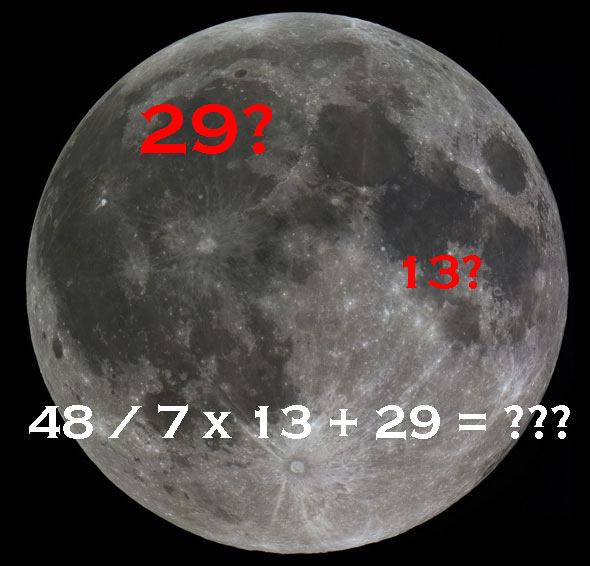Create a free profile to get unlimited access to exclusive videos, sweepstakes, and more!
Follow-up: Full Moons, Leap Days, and Friday the 13th

After this morning’s post about a full Moon occurring on Friday the 13th, I got a few comments wondering how much more rare a full Moon on Feb. 29 would be.
Actually, the math on that isn’t hard, and the number may surprise you. So let’s take a look.
Feb. 29 occurs once every four years, on leap year (if you want the details on that, oh boy do I have ‘em). That means it happens once every 48 months. Every month has a 13th in it, so in that same time period the 13th happens 48 times.
So just to start, a full Moon on any given 13th of the month will happen 48 times more often than on Feb. 29.
But now we want to constrain the 13th, looking only when that date falls on a Friday. Statistically speaking, that should happen one time out of seven (because there are seven days in a week). So out of the 48 times the 13th occurs in four years, 48 / 7 = roughly 7 should be Fridays.
That means Friday the 13th happens about seven times as often as Feb. 29. Since the full Moon can fall on any random date, the full Moon occurring on Feb. 29 should happen about one-seventh as often as one on Friday the 13th.
See? That’s not so hard to figure out, and the number really is surprising; at first blush you might expect it to be far more rare than that! But our instincts sometimes steer us wrong when it comes to rare events and numbers.*
That’s why we have math, actually. It helps us figure stuff out, of course, but (as long as we’re doing it right) it also makes sure we’re not fooling ourselves.
Poking around the Web, I found that the last full Moon on Feb. 29 was in 1972, and the next will be in 2048. Other ways to calculate it show it should happen about once per century or so (though if you account for time zones as I mentioned in this morning's post, this could be more often). So there you go.
Oh, one last note: The numbers I'm using here are assuming you're using a long baseline for time, like decades or even centuries. In the short term some dates may get full Moons more often due to the lunar cycle beating with the cycle of dates. The time between one full Moon to the next is about 29.5 days, roughly one month (this is called the synodic period of the Moon). So a full Moon falling on, say, the 15th in one month means it can fall on the same date the next month if the timing works out just right.
When you start fiddling around in details things get complicated pretty quickly, which is why I did only rough numbers here. You're free to dive as deeply into this as you want, of course! I generally really enjoy doing that to see where it leads. Numbers, it turns out, are pretty fun to play with.
*Bonus question: Pick a random date, say, Sept. 13. How much more common is it to get a full Moon on that date than on Feb. 29?


























